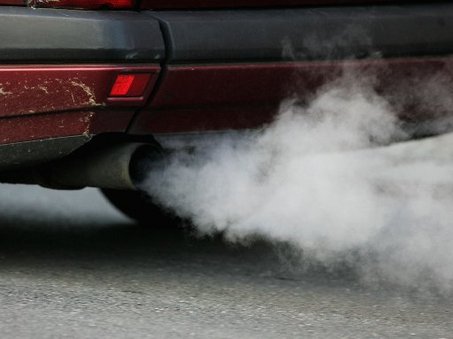Vehicular Air Pollution in Colombo

In Colombo vehicles are responsible for 60% of the air pollution load. The city is falling into the toxic grip of motorization. Colombo is in the grip of deadly dieselisation: the current level of diesel technology and fuel quality represents very special risk, as diesel vehicle fleet is expanding in a maniacal pace. Diesel vehicles are 45% of the total fleet that already use up more than 90% of the diesel fuel. The policy to under tax diesel fuel and maintain a wide gap with petrol prices is largely responsible for this trend in the region.
Sri Lanka cities have begun to generate their own evidences on health impact of air pollution. According to the studies carried out by Prof Oliver Illeperuma of University of Colombo 45% of the total outpatient morbidity in two leading hospitals was due to diseases of the respiratory system. Diseases of the respiratory system even after excluding diseases of the upper respiratory tract, pneumonia and influenza has ranked as the second leading cause of hospitalization in Sri Lanka over past 5 years and it has become the second leading cause of death among children aged 5 – 14 years. Another study carried out by Prof. Amal Kumarage, University of Moratuwa has estimated health damage due to fine particles (PM10) at Rs. 32 billion for the city of Colombo alone.
Colombo has already initiated its first generation action to clean up its air that includes a wide gamut of measures.
These include – introduction of Euro emissions standards, mandatory annual vehicle emission testing program that was launched in 2008, banned import of two stroke engines; initiated conversion of 3-wheelers to LPG/ electric; constructing refinery that can produce Euro IV diesel by 2012 and plans to introduce Euro 4 in 2012 and so on. All these measures together has stabilised PM10 levels in Colombo.
Expansion of air monitoring grid has just about begun In Colombo the discussions have started to improve the monitoring system. At the moment air quality monitoring is done only in the Fort area which is close to the sea. But the experts from the University of Colombo and others have pointed out that the grid should be expanded and more suitable localities should be identified for better risk assessment.
The city is fortunate to have the advantage of its strength in high current usage of public transport – more than 60 percent and should build on this advantage to avert the crisis. Public transport buses form less than 10% of the vehicles kms but they carry 60% of the passenger km. This means they use much less road space but meet significant share of travel need of the city. But private vehicles – cars and two-wheeler dominate vehicles km in the city at 60%, and occupy more road space, but carry just about 25 per cent of the passenger Km – a lot less than bus. If Colombo scales up alternatives it can easily make the transition to the low polluting and low carbon mobility paradigm that the world is trying to achieve today to be more sustainable. Colombo must recognize and build on this strength.
Colombo urgently needs a public transport strategy. A study carried out by the AsianDevelopment Bank for Colombo has shown that an increase in bus ridership share from 76% to 80% can save 104,720 tonnes of oil equivalent, or 3% of the fuel consumed in the baseline case. This means 5% reduction in total vehicles and freeing up of roadspace equivalent to removing 62,152 cars. This can also lead to 5% reduction in total vehicles (47,716), release road space (equivalent to removing 62,152 cars from the road). This represents an enormous benefit.
Related Content
- Sri Lankan authorities to conduct vehicle emission tests twice a year
- Sri Lanka to host the 8th Regional Environmentally Sustainable Transport (EST) Forum in Asia
- Air quality monitoring units due soon
- Sri Lanka implements a programme to minimize emission of greenhouse gases
- Hazardous smoke-emitting vehicles to be banned
- Colombo eyes Delhi’s green transport
